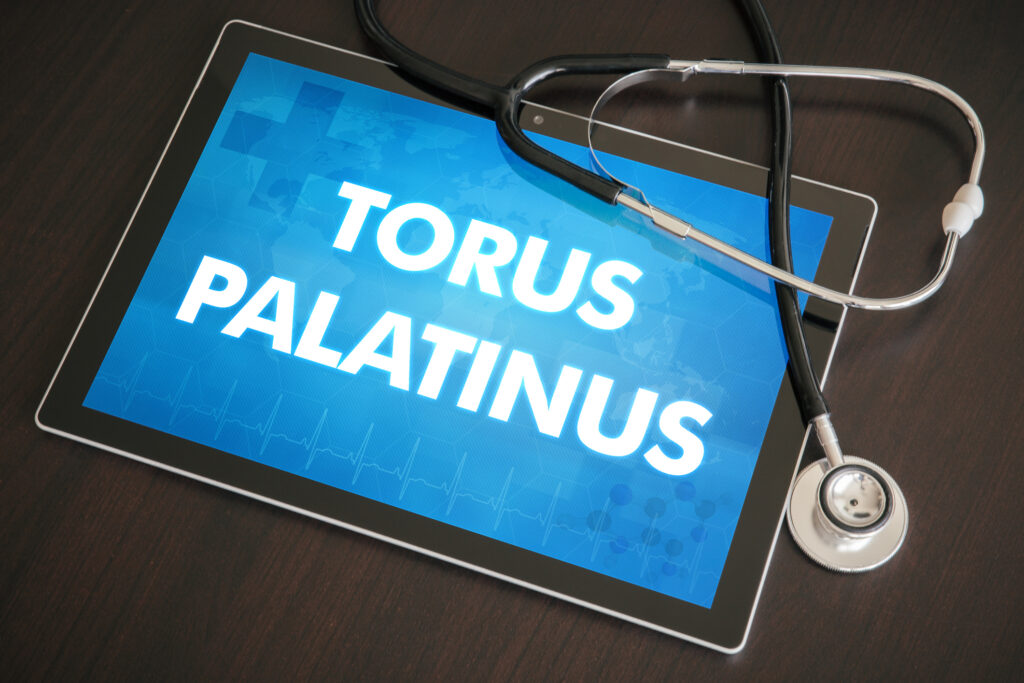
Not everyone has heard of “tori,” but these small, bony growths in the mouth are surprisingly common. For many people, tori are harmless and don’t need treatment. But for others, they can cause real challenges with eating, speaking, oral hygiene, and even dental work.
At Precision Periodontal and Implant Center, we believe that understanding your oral health is the first step to protecting it. If you’ve been told you have tori—or you’re noticing hard bumps in your mouth—you may wonder whether tori removal is necessary. Let’s take a closer look at what tori are, why they develop, and when surgical removal is the right call.
What Are Tori?
Tori are benign (non-cancerous) bony growths that develop in the mouth. The two most common types are:
- Torus mandibularis: Found on the inside of the lower jaw, near the tongue.
- Torus palatinus: Found on the roof of the mouth (hard palate).
They can be small and smooth or large and lumpy, and they often grow slowly over time. While the exact cause isn’t fully understood, genetics seems to play a strong role.
When Are Tori Harmless?
The good news is that tori themselves aren’t dangerous. Many people have them for years with no symptoms at all. If your tori are small and not causing any issues, you may never need treatment.
Routine dental exams at Precision Periodontal and Implant Center will ensure we monitor them for any changes, but in many cases, no intervention is required.
Signs Tori Might Need Removal
However, there are situations when tori start to interfere with daily life, and removal becomes the best option. Here are some signs you may need to consider surgery:
- Difficulty Wearing Dentures or Oral Appliances
Tori can make it impossible to fit dentures comfortably. They can also interfere with night guards or orthodontic retainers. For patients who need these appliances, removing the tori may be essential. - Recurring Injuries or Ulcers
Large or sharply contoured tori can be prone to repeated trauma. They may rub against food or dental appliances, causing chronic sores or ulcers that are painful and prone to infection. - Problems with Speech or Eating
In some cases, especially with very large tori, the extra bone can interfere with speech or make chewing and swallowing uncomfortable. - Interference with Oral Hygiene
Brushing and flossing around large tori can be difficult. Food and plaque can accumulate in hard-to-reach spots, increasing your risk of cavities and gum disease. - Preparing for Dental Treatments
Some dental procedures, like placing dentures, partials, or even implants, may require tori removal for proper fit and success.
What to Expect If You Need Removal
If Dr. Ivanov determines that tori removal is the right choice for you, the procedure is typically straightforward and highly predictable. At Precision Periodontal and Implant Center, we’ll take the time to explain every step and make sure you’re comfortable.
The surgery usually involves:
- Numbing the area with local anesthesia (or sedation if needed)
- Making a small incision in the gum
- Removing the excess bone with specialized tools
- Smoothing the bone edges
- Suturing the gum tissue back in place
Post-operative discomfort is usually mild and manageable with over-the-counter pain relief and ice packs. Most patients heal quickly and enjoy significant improvements in comfort and function.
Is Tori Removal Right for You?
If you’re living with discomfort, trouble with dentures, or repeated mouth injuries from tori, you don’t have to just put up with it. At Precision Periodontal and Implant Center, we offer expert evaluation and personalized treatment plans to help you enjoy a healthier, more comfortable smile.
Ready to see if tori removal is right for you? Call us today at 424-626-1960 to schedule your consultation. Let’s find the best solution for your unique needs.
